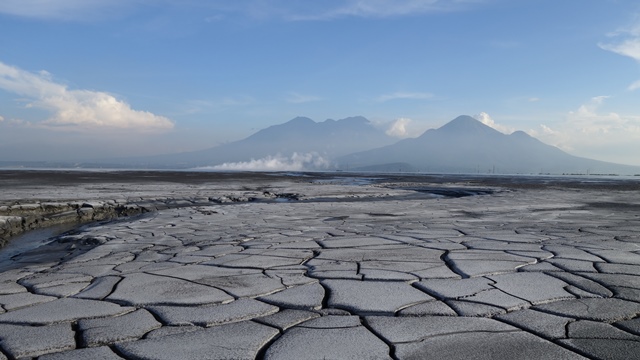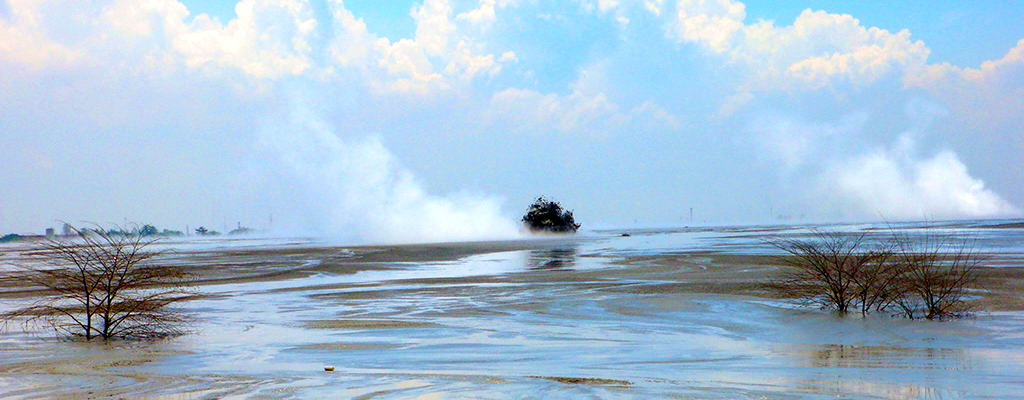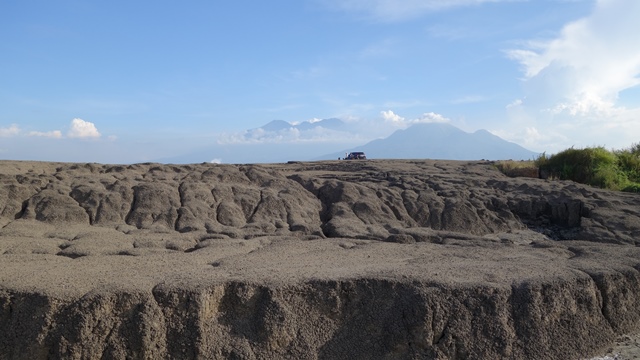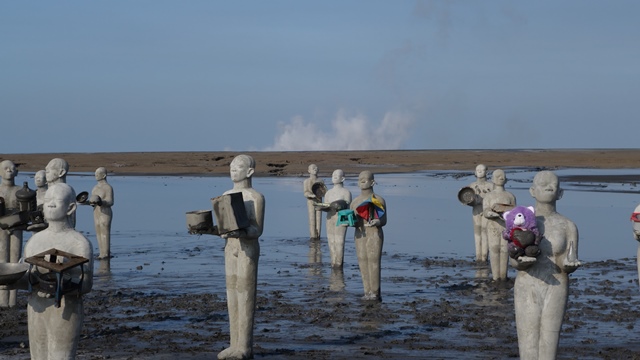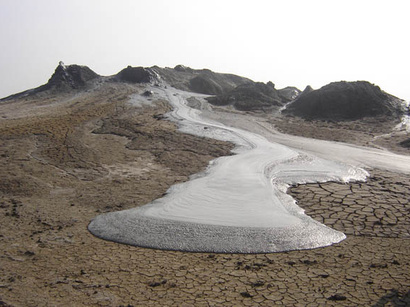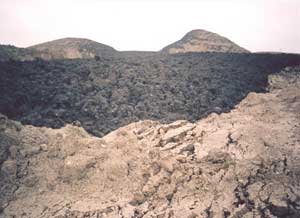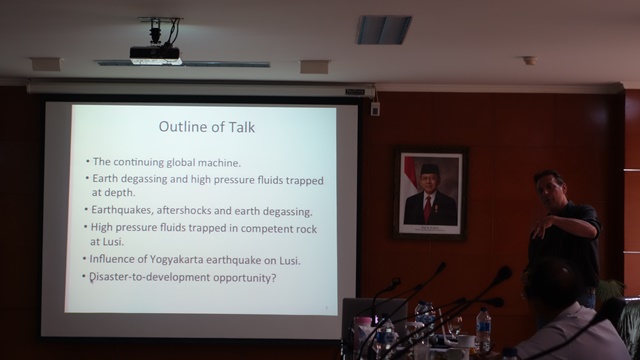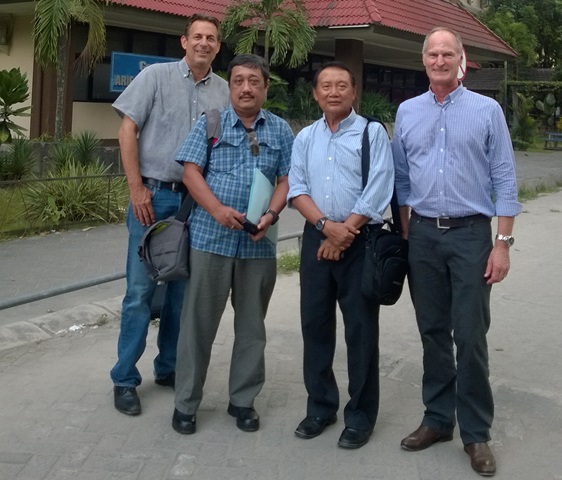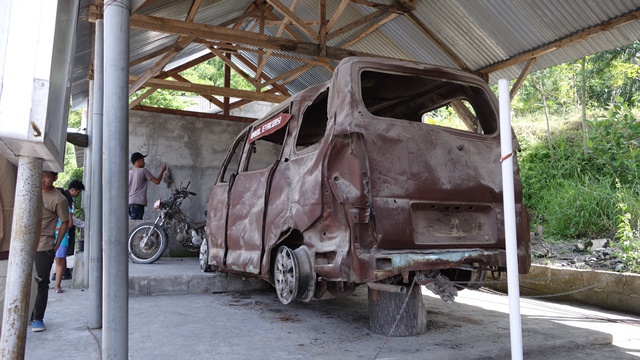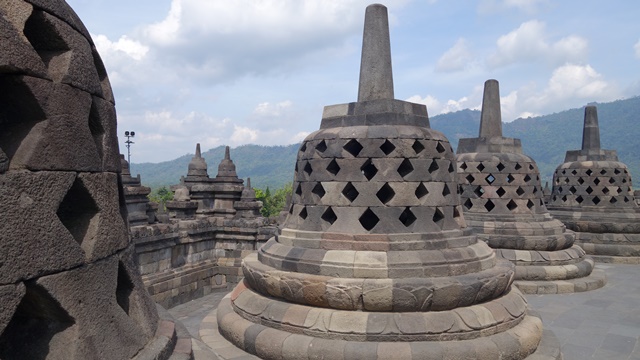31
Oct
2017
On May 29, 2006, a torrent of mud spewed from vents that opened up in the ground in a densely populated area of the Indonesian island of Java. That mudflow eventually buried houses, businesses and roads over an area twice the size of Central Park in New York and drove tens of thousands of people from their homes. More than 11 years later, mud, rocks and gases still sputter from the gashes in the earth there.
17
Oct
2017
WASHINGTON D.C. — On May 29, 2006, mud started erupting from several sites on the Indonesian island of Java. Boiling mud, water, rocks and gas poured from newly-created vents in the ground, burying entire towns and compelling many Indonesians to flee. By September 2006, the largest eruption site reached a peak, and enough mud gushed on the surface to fill 72 Olympic-sized swimming pools daily.
24
Jul
2017
Lusi is possibly the youngest sedimentary-hosted hydrothermal/geothermal system on Earth and is located a few kilometers to the NE of the Arjuno-Welirang volcanic complex. Picture: Humanitus Sidoarjo Fund
27
Sep
2016
Vielleicht war es ein Fehler bei einer Bohrung oder ein entferntes Erdbeben. Seit zehn Jahren jedenfalls sprudelt Schlamm aus einem Loch in Java. Bereits 40 000 Menschen haben ihre Häuser verloren.
21
Sep
2015
“I am surprised that the authors could arrive at such a strong conclusion from such inconclusive data,” said Stephen Miller, a professor of geodynamics and geothermics at the University of Neuchâtel in Switzerland who has published findings in support of the earthquake hypothesis. “All science screams that Lusi is natural.”
29
Jun
2015
New analysis of underground gas levels measured at the time of the outburst point the finger to gas exploration -- not an earthquake -- as the trigger, a research team from the United States, Britain and Australia wrote in the journal Nature Geosciences.
7
Apr
2014
Mahkamah konstitusi is the highest court in Indonesia that rules on the constitutionality of laws & regulations passed by government bodies.
15
Nov
2013
Indonesia’s antigraft body intensified its investigation into the disgraced head of upstream oil and gas regulator SKKMigas, adding an additional charge of money laundering to the growing docket of Rudi Rubiandini, a Corruption Eradication Commission (KPK) official said on Thursday.
15
Aug
2013
Indonesian authorities have named the head of the country's oil and gas regulator, SKKMigas, as a suspect in a bribery case.
14
Aug
2013
Rudi Rubiandini, head of Indonesian energy regulator SKKMigas, speaks during an interview with Reuters at his office in Jakarta in this March 6, 2013 file photo.
24
Jul
2013
Earthquake, not drilling, likely caused 2006 eruption in Java.
22
Jul
2013
A catastrophic mud eruption in Indonesia blamed on drilling by an oil company might instead have natural causes, new research suggests.
22
Jul
2013
Nature Geoscience | Letter Lusi mud eruption triggered by geometric focusing of seismic waves M. Lupi,1 E. H. Saenger,2 F. Fuchs1 S. A. Miller1 Affiliations Contributions Corresponding authors Journal name: Nature Geoscience Year published: (2013) DOI: doi:10.1038/ngeo1884 Received: 29 November 2012 Accepted: 10 June 2013 Published online: 21 July 2013
22
Jul
2013
The Lusi mud eruption that began in Indonesia in 2006, and is ongoing, could have been triggered by amplified seismic waves from a large earthquake in the region two days previously, reports a study published this week in Nature Geoscience.
17
Mar
2013
Oil and gas company Minarak Lapindo Jaya said on Wednesday that all victims of the mudflow disaster in East Java would be fully compensated by the end of May.
17
Mar
2013
The end may be near for an erupting mud volcano that has wreaked havoc in Indonesia. In a few years, the volcano will spew just 10 percent as much mud as it does today, scientists predict.
20
Sep
2012
19
Sep
2012
The Republican Seismological Service Center of the National Academy of Sciences of Azerbaijan (AMEA) is conducting work on installation of seismic telemetry stations in the Caspian Sea.
15
Mar
2011
The Ministry of Environment & Natural Resources of Azerbaijan reports of current grave activity of mud volcanoes Dashgil and Ayrantoken located in Alat township of Garadagh district of Baku.
15
Mar
2011
Baku, Fineko/abc.az. The Ministry for Emergency Situations of Azerbaijan informs that mud volcano Shihzeyirli located in Gobustan region erupted yesterday.
15
Mar
2011
Azerbaijan, Baku, March 14 A mud volcano erupted in the Gobustan region due to aftershocks, Geology Institute Mud Volcanoes Department Director Adil Aliyev told Trend.
15
Mar
2011
13 Mar 2011 22:56 ] Baku- APA. A mud volcano erupted in Gobustan region of Azerbaijan on March 13. Witnesses heard explosion before the eruption, mud breccia erupted and then fire blazed up in the territory of Shikhzayirli mud volcano, APA reports quoting the website of the Ministry of Emergency Situations.
8
Mar
2011
Ever since it first erupted in 2006, the mud volcano Lusi in East Java has not stopped gushing grey mud and has swallowed at least 12 villages. A new study estimates that it won't stop for decades to come.
1
Mar
2011
Since it roared to life in May 2006, a mud volcano near Indonesia's coastal city of Sidoarjo has swallowed homes, rice paddies, factories, and roads, killing 15 people, displacing 40,000, and harming the livelihoods of many more. As the ongoing eruption nears its 5th anniversary, observers wonder whether it will ever stop. The answer: Not anytime soon. A new study predicts the volcano will continue spewing significant amounts of mud for another 2 decades. A second study forecasts that it could grind on as long as 87 years.
17
Feb
2011
The health of students at two elementary schools and two kindergartens in Pejarakan and Besuki villages, which have yet to be relocated at the hot mudflow disaster in Sidoarjo, East Java, is at risk because of the methane gas they breathe.



